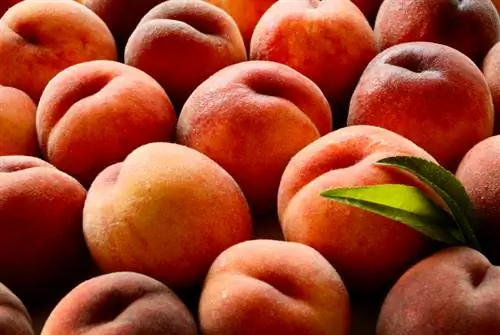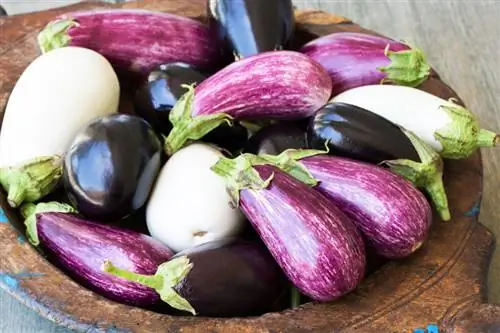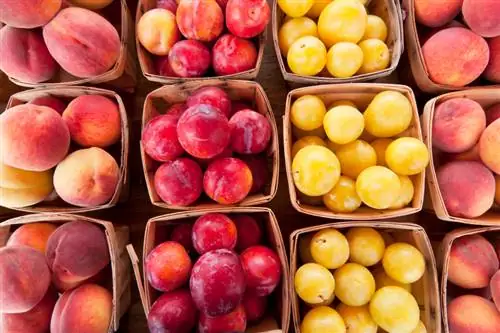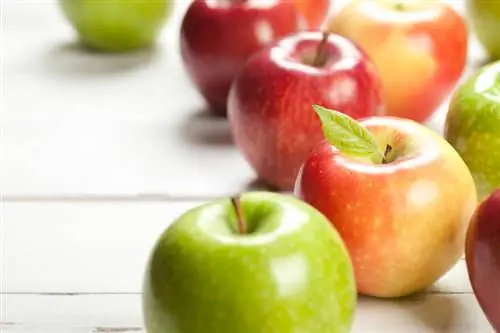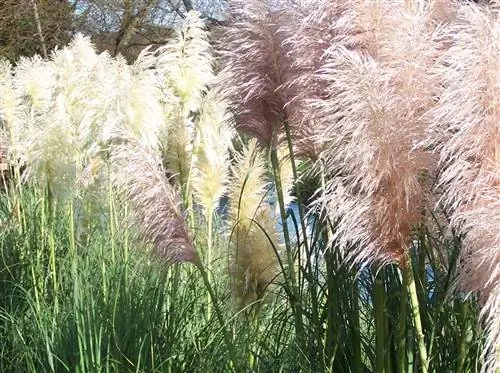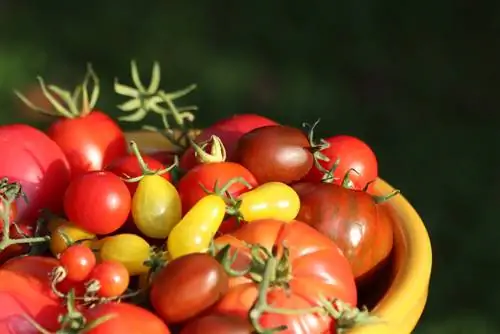- Author admin [email protected].
- Public 2023-12-16 16:46.
- Last modified 2025-01-23 11:19.
Contrary to what many people think, the peach has been cultivated for around 4000 years. The sweet fruit originally comes from southern China, but it has now started its worldwide triumph. There are currently around 3000 different types of peaches known.
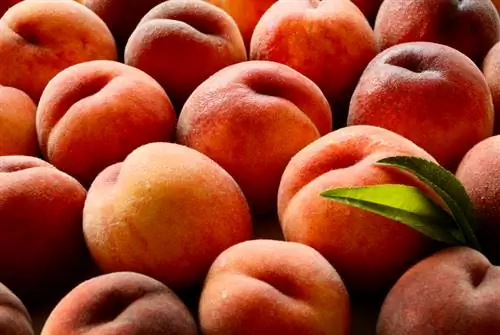
What types of peaches are there?
There are around 3000 different types of peaches, which are mainly differentiated by the color of the flesh: white, yellow, red and red-fibre peaches. Varieties such as Benedicte, Revita, Amsden and Vineyard Peach are less susceptible to curl disease. The ripening time varies depending on the variety.
Peaches are classified according to the color of their flesh
Peaches are mainly differentiated by the color of their flesh: there are white, yellow, red and red-fibered peaches. The dark red, very distinctive-looking vineyard peaches actually have white flesh, but it is streaked with red. Every peach has its own unique taste and fans. Some people find the white peaches tastier, others the yellow ones - it's all a question of taste. However, anyone who tries a typical vineyard peach will initially be disappointed. This type of peach tastes much tarter than others and lacks the classic sweetness. But vineyard peaches are a particularly aromatic pleasure in compote, jam or as a liqueur.
Varieties with high resistance to curl disease
Anyone who grows peaches knows this problem: curl disease sooner or later affects almost every peach tree. Treatment and control is difficult, which is why planting a peach variety with high resistance is recommended. Although these peach tree varieties are also affected, the consequences are often only marginal. Some old peaches show a certain resistance to curl disease, but also special newer varieties.
Which peach tree varieties have a low susceptibility to curl disease?
- Benedict
- Revita
- Amsden
- Vineyard Peach
- Red Ellerstädter, also Kernechter from the foothills
- Formerly Alexander
Basically, there is no truly resistant variety, just less susceptible ones. In addition, white-fleshed peaches appear to be significantly more robust than yellow-fleshed ones. An exception to this rule is the Suncrest variety
Differentiation according to harvest time
Peaches are also differentiated according to when they ripen, with the main season for the sweet fruits being in August. The later a peach ripens, the less suitable it is for northern locations. Vineyard peaches, for example, are ready to eat from mid-September and would not ripen north of the wine-growing climate. In addition, the later the variety ripens, the easier it is to remove the pulp from the stone. Many late-ripening varieties also bloom very early. One of the earliest varieties is the old US peach variety Amsden, which can be harvested from the end of July.
Corn peach varieties
If you want to grow a small peach tree yourself from a seed, it is better to choose seedless varieties for this purpose. Although a tree would also grow from the seeds of other varieties, it would not necessarily have to belong to the same species as the mother plant. So to avoid surprises, grow your own peach tree
- Red Ellerstädter, also Kernechter from the foothills
- Naundorfer Kernechter
- and Proskauer peach.
The varieties mentioned are also very robust and are well suited for gardening.
Tips & Tricks
Peaches can also be grown well in containers, but not all varieties are suitable for this. The dwarf variety Rubira is recommended for keeping in pots.

